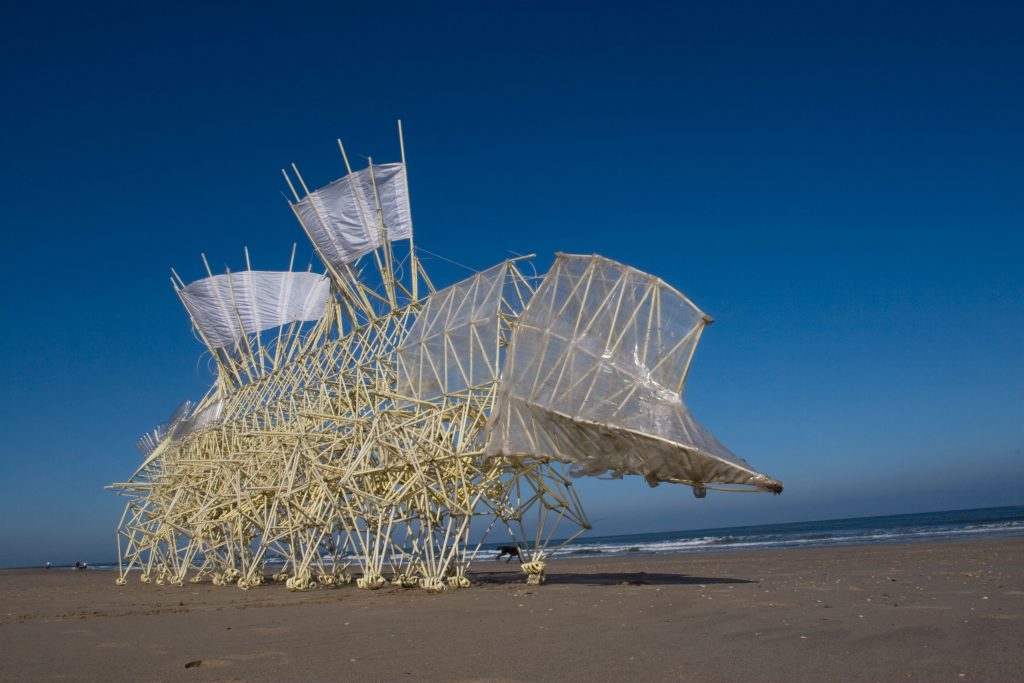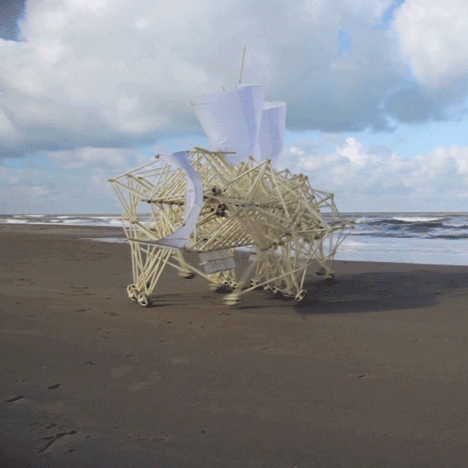Dutch artist Theo Jansen makes these kinetic sculptures called “strandbeest.” They are made from yellow plastic tubes and are able to mimic the movement of a leg powered by the coastal wind.


- What feature of the work could we specifically evolve into a technique for wearable kinetic sculpture or costume?
The feature that interested me the most is that it is so animal-like, as if it has its own life. It is moving by translating wind energy into mechanical movement in such an organic way without any human interaction. We’ve seen many examples of kinetic movement propelled by humans, but this interaction with nature is very special and can be evolved into a wearable as well, where the wearable reacts to the wind movement of the sea or certain nature’s sound.
- What details of the artist or concept are not immediately apparent and how do they inform the work?
In order to make the strandbeests move in windless conditions, the artist devised a system of “wind stomachs,” or a wind storage. Doing this, the power source is connected to different components of the body, and as the air pressure changes, the beest can change its behavior such as changing direction and lifting its body off of the sand. By making a self-sufficient system, the artist quite literally gave this sculpture a life.
- Are there closely related works?
Artist Anthony Howe also creates windmill-like sculptures that move with the wind.

l
inks to additional sources, if online
Website to the project Strandbeest https://www.strandbeest.com
Theo Jansen’s TED talk https://www.youtube.com/watch?v=hHTuXe1rZrQ
mechanism of the movement explained
Leave a Reply
You must be logged in to post a comment.